Abstract
1 Twenty-seven intelligent volunteers took part in a classroom experiment on two occasions to assess subjectively, ordinally related volumes of sound (offered in random sequence), using the visual analogue scale. 2 It was simple to use and largely acceptable. Big differences were significant by parametric tests but small ones were sometimes significant only with ordinal ones. Within-subject comparisons were more accurate and more sensitive than those between-subjects. The t-test was very robust. 3 Five out of 49 results were erroneously significant; they remained so no matter how the data were handled. It was concluded that this was due to a shift in either perception, cognition or scoring between the two sessions. 4 Arcsine transformations made little difference. The mechanism of these is fully discussed. A conversion to proportional scores resulted in very much improved sensitivity. 5 It is recommended that authors using the visual analogue scale: have valid reason in their own setting for using a transformation; present the distribution, or at least the medians and ranges of their raw scores; also use a simple but different measure so as to demonstrate internal consistency between them.
Full text
PDF
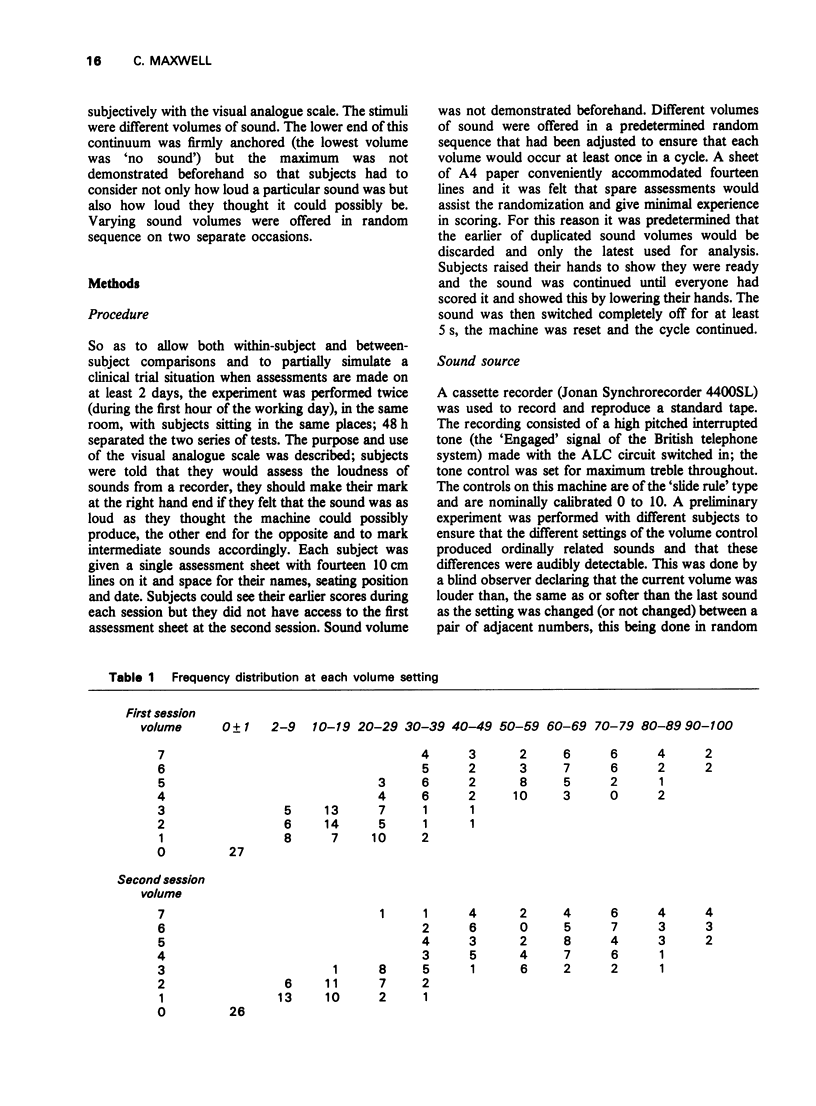

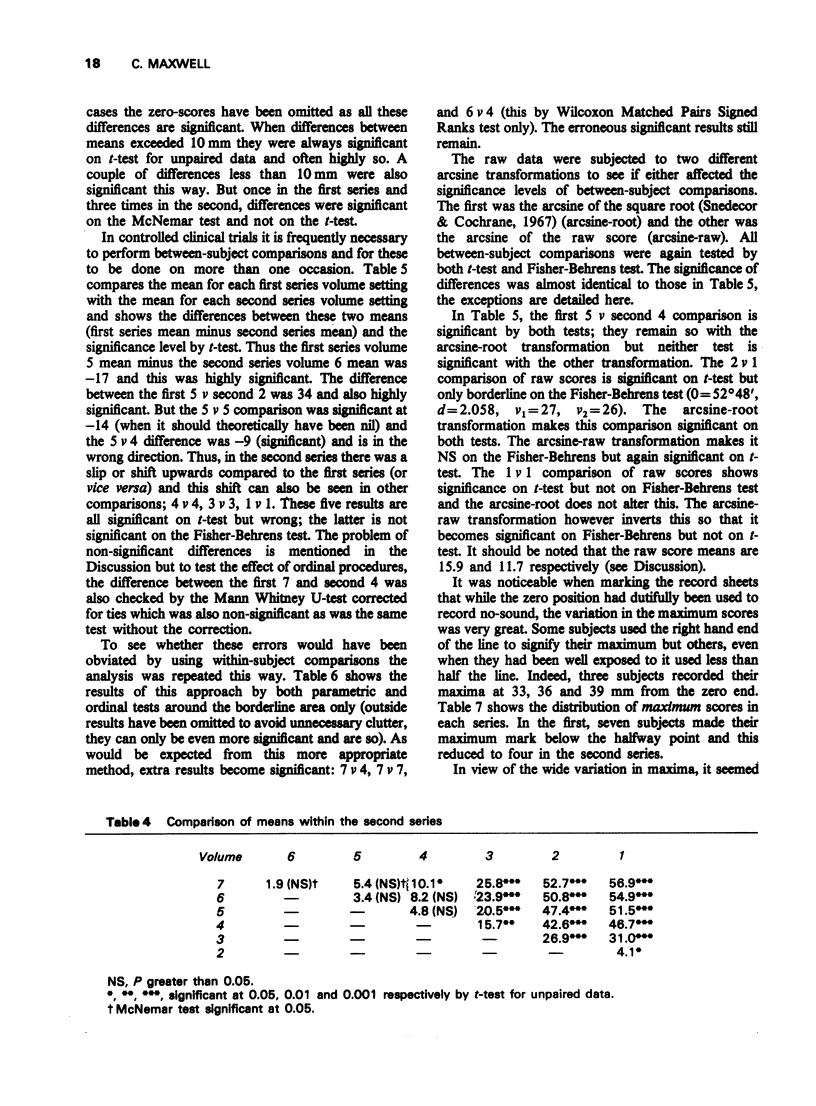

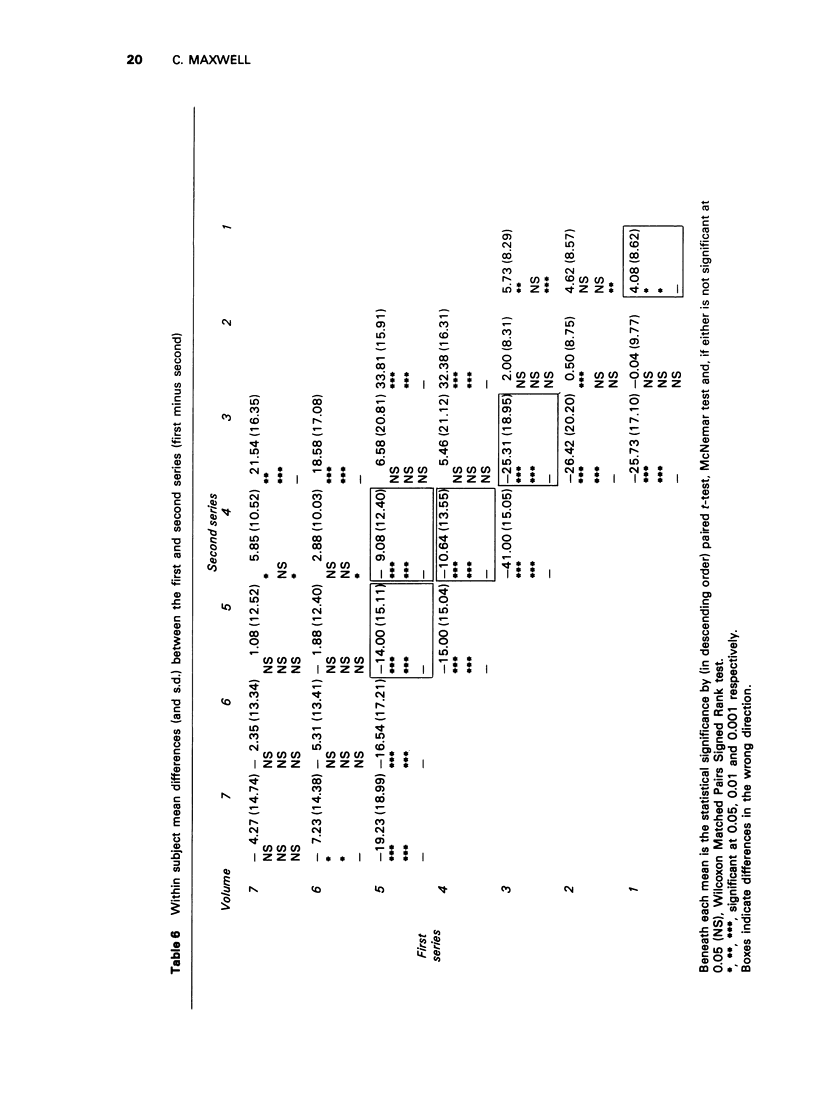

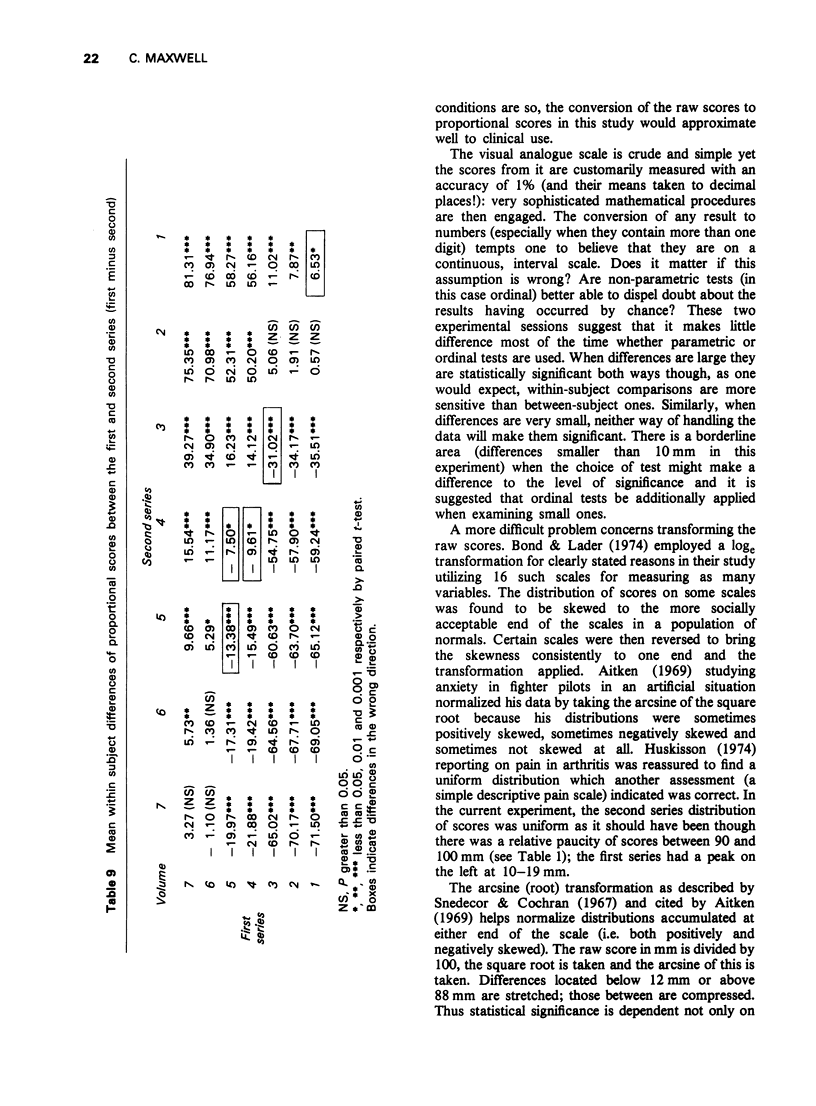

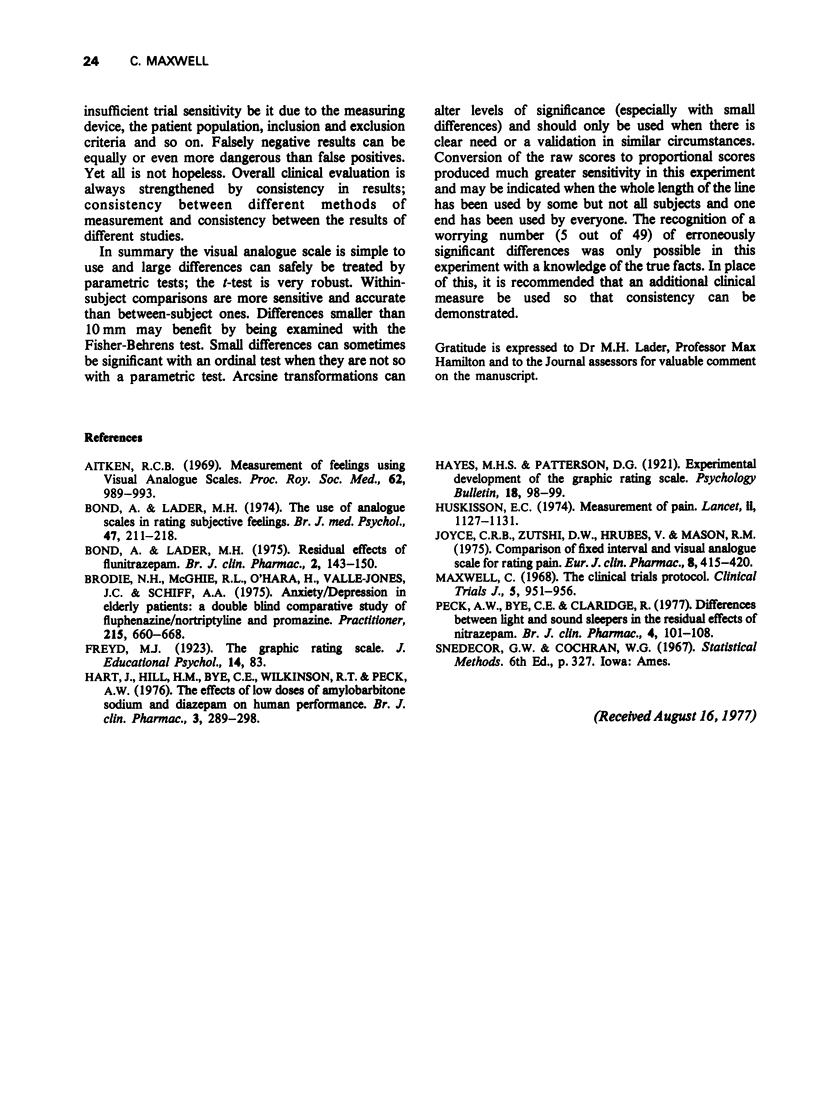
Selected References
These references are in PubMed. This may not be the complete list of references from this article.
- Aitken R. C. Measurement of feelings using visual analogue scales. Proc R Soc Med. 1969 Oct;62(10):989–993. [PMC free article] [PubMed] [Google Scholar]
- Bond A. J., Lader M. H. Residual effects of flunitrazepam. Br J Clin Pharmacol. 1975 Apr;2(2):143–150. doi: 10.1111/j.1365-2125.1975.tb01569.x. [DOI] [PMC free article] [PubMed] [Google Scholar]
- Brodie N. H., McGhie R. L., O'Hara H., Valle-Jones J. C., Schiff A. A. Anxiety/depression in elderly patients. A double-blind comparative study of fluphenazine/nortriptyline and promazine. Practitioner. 1975 Nov;215(1289):660–664. [PubMed] [Google Scholar]
- Hart J., Hill H. M., Bye C. E., Wilkinson R. T., Peck A. W. The effects of low doses of amylobarbitone sodium and diazepam on human performance. Br J Clin Pharmacol. 1976 Apr;3(2):289–298. doi: 10.1111/j.1365-2125.1976.tb00606.x. [DOI] [PMC free article] [PubMed] [Google Scholar]
- Huskisson E. C. Measurement of pain. Lancet. 1974 Nov 9;2(7889):1127–1131. doi: 10.1016/s0140-6736(74)90884-8. [DOI] [PubMed] [Google Scholar]
- Joyce C. R., Zutshi D. W., Hrubes V., Mason R. M. Comparison of fixed interval and visual analogue scales for rating chronic pain. Eur J Clin Pharmacol. 1975 Aug 14;8(6):415–420. doi: 10.1007/BF00562315. [DOI] [PubMed] [Google Scholar]
- Peck A. W., Bye C. E., Claridge R. Differences between light and sound sleepers in the residual effects of nitrazepam. Br J Clin Pharmacol. 1977 Apr;4(2):101–108. doi: 10.1111/j.1365-2125.1977.tb00679.x. [DOI] [PMC free article] [PubMed] [Google Scholar]


